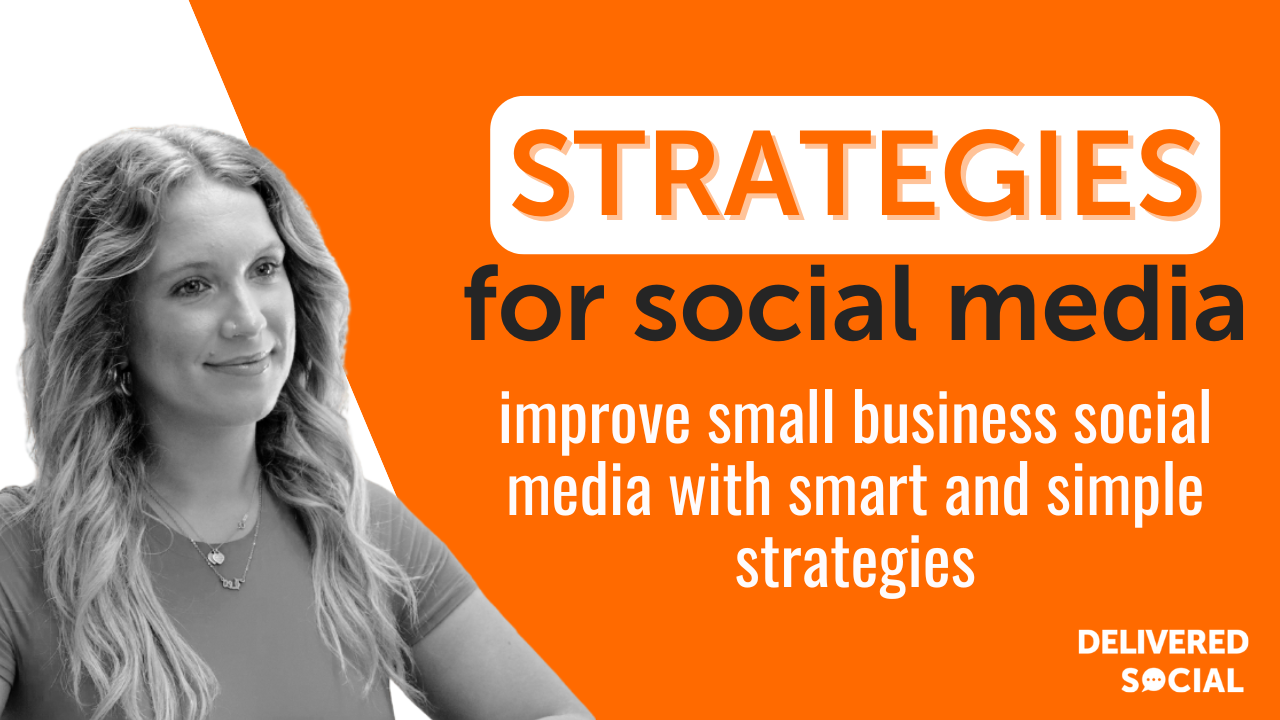
Social media offers small businesses a direct way to reach customers, build trust, and stay visible. But without a clear plan, it’s easy to waste time on posts that don’t lead to results. To improve small business social media, focus on strategies that save time, connect with your audience, and support your goals. This article breaks down simple actions you can take—like choosing the right platforms, planning content ahead of time, and tracking what works. Whether you’re managing it yourself or with a small team, these steps will help you get more out of the effort you already put in.

Define Your Brand Voice and Visual Identity
Start by choosing a voice that matches how you want your business to sound. This includes the words you use, the way you speak to customers, and how you respond in comments or messages. Whether it’s friendly or direct, make sure it stays the same on every platform. A steady tone builds trust and helps people know what to expect from your posts.
Next, decide on a clear visual style. Use the same logo, colors, and fonts across all social media accounts. Keep image styles similar too — whether it’s photos of products or behind-the-scenes shots. This makes your content easy to spot in busy feeds. When someone sees your post without reading it first, they should still know it belongs to your company.
Templates can help with this process. Create simple layouts for quotes, announcements, or promotions using consistent design elements. These save time while keeping everything uniform.
When posting videos or stories, keep them aligned with your voice and look as well. Add captions that match your tone and include visuals that follow the style you’ve chosen elsewhere.
If others manage your accounts or create content for you, write down guidelines they can follow. Include sample phrases for replies and examples of approved images or post formats.
A strong brand identity is not only about logos but also about how people feel when they see or hear from you online. Keeping everything aligned helps build recognition fast.
To improve small business social media efforts over time, revisit these choices often to make sure they still fit as your company grows or changes direction. Stay consistent with updates so followers don’t get confused by sudden shifts in appearance or language choices across platforms like Instagram, Facebook, TikTok, LinkedIn—or wherever you’re active most often.
Choose the Right Platforms for Your Audience
Start by finding out where your customers spend their time online. Not every social media site will help your business grow. Use your time and energy on platforms that match your goals and reach the people you want to serve.
If you sell products to younger users, TikTok or Instagram may be better choices. If you offer services for professionals, LinkedIn could bring more results. Facebook works well for local outreach and events. Twitter can help with short updates or customer service if used regularly. Each platform has a different purpose, so picking just one or two that fit best can save time and give stronger outcomes.
Look at what others in your field use most often. See where they get the most likes, shares, or comments. You do not have to copy them but use this as a guide while planning your approach.
Think about how much time you can spend each week managing these accounts. A small team may only be able to handle one channel well without losing focus on other tasks. Posting often is important, so choose based on what’s manageable instead of trying to cover every option.
Use data from past efforts if available. Check which sites brought traffic or sales before and build from there. If you’re just starting out, test two platforms first and track results over a few months before adding more channels.
To improve small business social media, aim for quality over quantity when choosing where to post content. Matching the right message with the right place helps connect with real buyers instead of wasting posts on inactive viewers.
Being active where it counts brings stronger returns than spreading efforts too thin across many places that don’t support growth directly connected to your business needs.
Create a Content Calendar for Consistency
Posting without a plan can lead to gaps in your social media activity. A content calendar helps you stay organized and avoids missed opportunities. It allows you to schedule posts ahead of time, so you’re not rushing to create something at the last second.
Start by choosing how often you want to post each week. This could be once a day or several times weekly, depending on your goals and available time. Then, map out topics that match your business focus—product updates, customer stories, tips, or behind-the-scenes moments.
Use tools like Google Sheets, Trello, or free scheduling platforms such as Buffer or Later. These help track what’s going out and when. Add post ideas for each date and include links, images, and captions where needed. That way everything is ready before it’s time to publish.
This approach saves hours every week because you’re not trying to come up with content on the spot. It also keeps your brand visible more regularly in followers’ feeds. A consistent posting rhythm builds trust over time because people know they’ll hear from you often.
A calendar also gives space for seasonal promotions or events tied to holidays or local happenings. You can prepare these weeks in advance instead of reacting at the last minute.
To improve small business social media results long term, consistency matters more than frequency alone. Even if you’re only posting twice per week, doing it regularly creates a dependable presence online.
Adjust your calendar based on what performs well over time. Look at likes, comments, shares—then use those insights to shape future posts that connect better with your audience’s interests and needs.
Engage Actively With Your Followers
Replying to comments, messages, and tags helps build a real connection. People want to feel heard. By answering their questions or even thanking them for feedback, your business shows it pays attention. This simple habit can lead to better loyalty over time.
When someone tags your business in a post, respond with a short reply or even reshare the content. It takes little time but makes a strong impact. Being present in conversations around your business improves how people view your brand.
Use notifications to stay on top of new replies or direct messages. Try not to wait too long before responding. A quick response shows that you’re available and ready to help with concerns or questions. Even a basic “Thanks for reaching out” can make someone feel noticed.
Make sure responses sound human and direct. Avoid using the same reply for every message—people will notice if it feels automatic. Use their name when possible, and refer back to what they said so it’s clear you read their comment.
Don’t ignore negative feedback either. Respond calmly and offer help or support where needed. This can show others that you take problems seriously and try to fix them quickly.
Over time, regular interaction can improve small business social media results by encouraging more followers to engage with your page voluntarily. When followers see active replies from you, they’re more likely to join the conversation themselves.
Stay consistent with engagement across all platforms where your business has an account—Facebook, Instagram, Twitter, LinkedIn, or wherever else you have customers reaching out digitally.
By keeping communication open through these small actions each day, businesses create stronger relationships without extra cost or effort beyond staying responsive and respectful in every exchange online.
Use Analytics to Improve Small Business Social Media Performance
Tracking data is key to making better decisions. When running social media for a small business, it’s important to know which posts get clicks, comments, and shares. These actions show what your audience cares about. Use platform tools like Facebook Insights or Instagram Analytics to see numbers tied to each post.
Look at how often people interact with your content. See what time of day gets more attention. Notice which videos or photos bring in responses. This helps you decide what type of content works best for your brand. If a certain topic gets more likes or replies, post more updates around that subject.
Review numbers weekly or biweekly instead of waiting too long. Fresh data shows changes in behavior faster than old reports do. You can test new ideas and measure if they help or hurt performance over time.
Focus on useful metrics such as reach, impressions, click-through rate, and saves. Reach tells you how many people saw your post at least once. Impressions count every view—even repeat ones from the same user. Click-through rate tracks how often someone taps on a link in your profile or caption compared to total views.
If engagement drops after trying something new, adjust quickly based on what the numbers show you. For example, if longer captions lead to fewer comments, try shorter ones next time and compare results again.
Using real-time feedback lets you improve small business social media without guessing what works next. Over time this leads to stronger results because every change comes from clear facts instead of random choices.
Test different posting times and formats—like reels versus stories—and watch how each performs week by week using analytics tools provided by the platforms themselves.
Stay consistent with checking stats so that trends become easier to spot early on before they affect long-term growth goals across channels like Facebook, Instagram, LinkedIn, or Twitter/X depending on where your audience spends most of their time online.

Leverage User-Generated Content and Testimonials
Encouraging real customers to share their experiences helps build trust. When people post photos, videos, or comments about your product or service, it shows others that your business delivers on its promise. These posts act as proof without needing extra effort from your team. Ask buyers to tag your page when they talk about their purchase. Share those posts on your profile with credit to the original poster.
User-generated content works better than polished ads because it feels natural. Viewers see real results from actual users instead of scripted messages. This kind of content often gets more likes, shares, and comments because it comes from someone outside the company.
You can also request simple testimonials after a sale. A short quote or video clip describing what they liked can help others decide to buy from you too. Post these reviews regularly across platforms like Instagram Stories, Facebook posts, and even LinkedIn updates if relevant.
Create a hashtag unique to your brand so people can use it when sharing feedback online. Monitor this hashtag weekly and choose good examples to repost on your main feed or in stories. Offering a small reward such as a discount code may increase participation.
To improve small business social media, always ask permission before sharing customer content publicly. Respecting privacy builds confidence between you and the buyer while keeping communication open for future interactions.
Rotate fresh user posts every week instead of repeating old ones. This keeps followers engaged with new voices and different viewpoints about what you offer. Try using polls or questions in captions when posting testimonials—this encourages more responses and boosts activity on each post.
Using honest feedback from actual users helps build loyalty over time while giving you free material that supports growth across all channels without raising costs.
Turning Strategy Into Social Success
To see real results from your social media efforts, it’s essential to align every action with a clear strategy. By defining your brand voice, selecting the right platforms, and maintaining consistency through a content calendar, you lay a strong foundation for growth. Active engagement, data-driven decisions, and leveraging user-generated content further enhance your ability to improve small business social media performance. These smart yet simple strategies empower you to build stronger connections with your audience and drive measurable outcomes. Stay focused, stay consistent, and let each tactic support your long-term business goals in the digital space.
Interested In Working Together?
Introducing Delivered Social. We’re The Most-Rated Digital Agency In Surrey & Hampshire – We’ve Got To Be Doing Something Right.
Delivered Social is a digital marketing agency with one mission—to help businesses grow. We’re famous in Guildford and Portsmouth for our social clinics. We believe in free advice. We build lasting relationships because our team prides itself on being helpful, which our clients appreciate.
If you are looking for a new website or an agency to manage your social media presence, we can help.
If you need something slightly different, here's a super handy list of all our services, or you can always email us.























